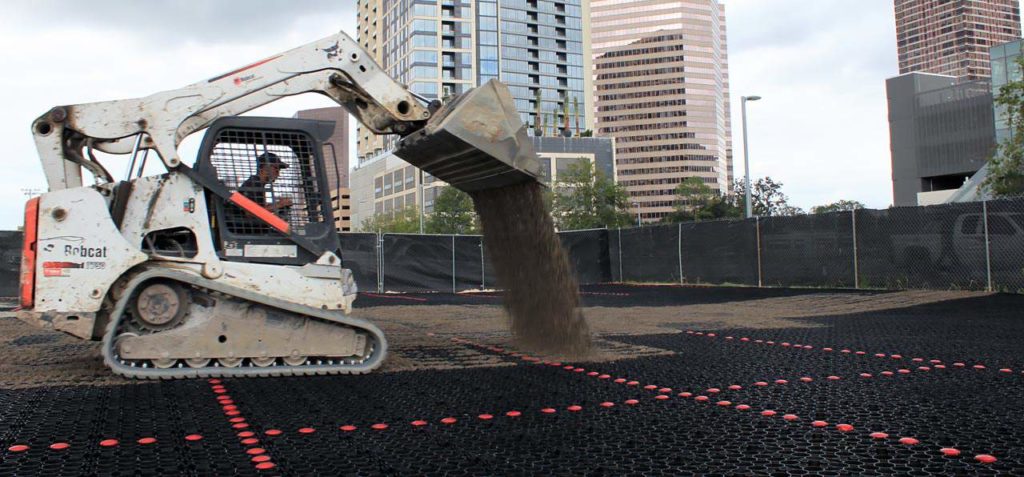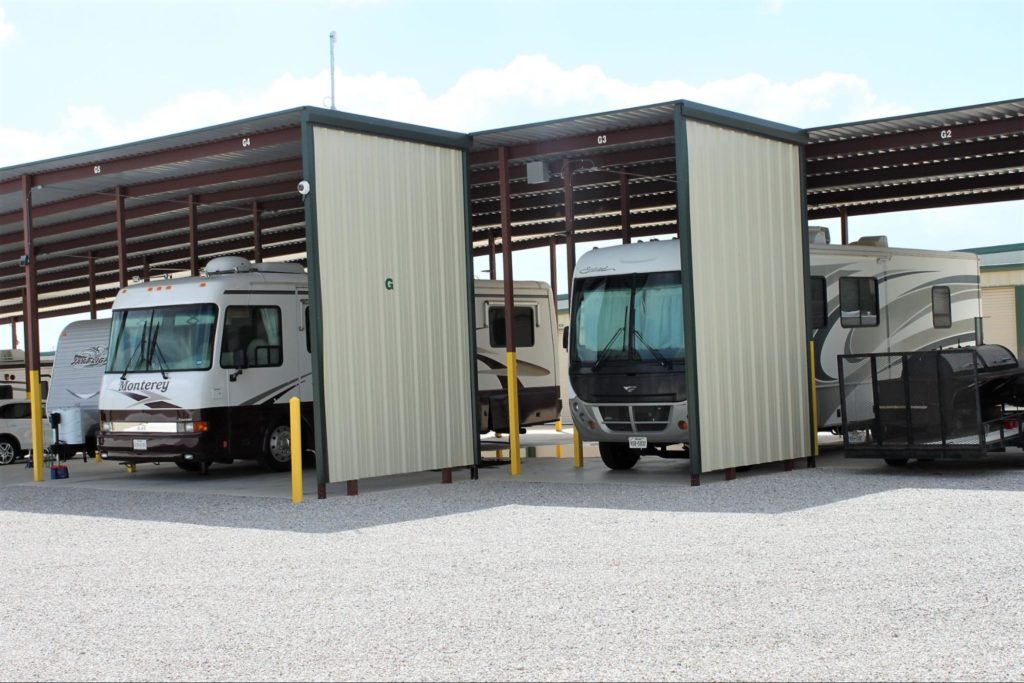
As an industrious entrepreneur, you have been looking at RV storage lot design ideas lately. You’ve noticed a dramatic increase in the number of RVs driving around since COVID-19, and it has you seeing dollar signs. All of these massive RVs need somewhere to park and be stored, and you’re just the person for the job.
Why Build an RV Storage Lot?

RV sales have been steadily increasing since 2015, and during the pandemic, RV sales hit record highs. In the post-pandemic world, recreational vehicle sales continue to skyrocket, consistently setting new records.
As RV sales increase, the ownership demographic broadens as well. People living in more urban areas with less storage space are purchasing RVs, and those people need a place to store their behemoth new investments.
Considerations for RV Storage Lot Design

Numerous factors go into creating a practical, efficient, and profitable RV storage lot design. Making well-informed decisions in the design phase will set your new business up for success in the long term.
1. Site Selection
The most critical factor in RV storage lot design, your site selection will dictate many of your other decisions going forward.
Site Size
When determining your site size, you will need an estimate of how many clients you will have. This approximation will give you an idea of how many acres of land you need.
Location
Property within city limits is not always necessary for an RV storage lot, and finding a piece of land that is convenient for clients heading out of town is key. Sites along popular roads that lead to lakes, rivers, or major highways are good choices for RV storage lots.
Price
As with any business venture, keeping your startup costs within an acceptable range is crucial. Parcels of land will be more expensive closer to town and developed areas. The farther away you get, the less expensive the land will cost.
2. Layout
The layout of an RV storage lot largely depends on the size of the property. Unlike traditional storage spaces, RV storage requires extra room in the aisles, entries, and exits to accommodate the large vehicles and awkward turning radiuses. There must be plenty of space for your clients to drive, turn, back up, and pull out without damaging property or other vehicles. A storage site that has generous space will be more appealing to potential patrons.
3. Storage Type
There are three main storage types; open, canopy and enclosed. Each of these three varieties has distinct advantages and disadvantages.
Open/Uncovered
Open or uncovered storage lots do not provide shelter from the elements and are essentially big parking lots. While sheltered storage spaces add value to your business, they also take up valuable space and increase overhead and long-term maintenance costs. Uncovered storage spaces require minimal overhead and upkeep.
Canopy
Canopied storage spaces are a great compromise between open and enclosed storage. While providing cover from rain, snow, and hail, canopies cost significantly less than complete enclosures.
Enclosed
If you are specifically working to attract high-end RV owners, then you will likely need enclosed storage spaces. Although enclosed storage spaces are more expensive and require more long-term maintenance, they will undoubtedly attract the most discerning clientele. Offering complete protection from the elements, as well as security from theft and damage, enclosed storage is genuinely the top-tier of RV storage.
4. Wash/Dump Station
When planning your RV storage lot design, a popular feature that adds considerable value for your clientele is a wash and dump station.
Although it requires your property to have additional on-site utilities, providing the ability for clients to empty sewage and grey water after a trip or adventure is a huge selling point. Being able to wash the RV off after a dusty weekend in the desert can also make your storage lot much more desirable.
5. Driveway Material
Your driveway material should be a significant consideration when working on your RV storage lot design. Grass lawns will die and turn to rutted-out mud when consistently driven over; gravel driveways will develop deep ruts. Asphalt will crack and wear over time and require costly upkeep. Plus, depending on your city or town’s regulations, you may be required to have a certain percentage of permeable space, which asphalt will not be able to provide.
So what can you do?
Permeable pavers, like TRUEGRID’s PRO LITE, PRO PLUS, and ROOT, allow you to create durable grass and gravel driveways that are impervious to ruts and will enable you to drive over the grass without killing it.
For light-duty areas including pull behind campers, easily install ROOT pavers over existing grass and let it grow, to create rugged, resilient grass drives that will not crack or wear over time. For heavy-duty areas install PRO LITE or PRO PLUS and fill with gravel for maintenance-free driveways that are immune to rutting or spilling.
Using permeable pavers, you can create an RV storage unit that costs less to build and maintain over the lifespan of your business.
Utilize TRUEGRID Permeable Pavers for RV Storage Lot Design

Since 2013, TRUEGRID has been building permeable pavers from 100% post-consumer recycled plastic that is made 100% in the USA.
Whether for residential or commercial use, TRUEGRID has the products you need to create beautiful, affordable, and environmentally conscious outdoor spaces for your home or business.
Contact TRUEGRID, or get a free estimate today!
TRUEGRID – True to your project. True to the environment.



